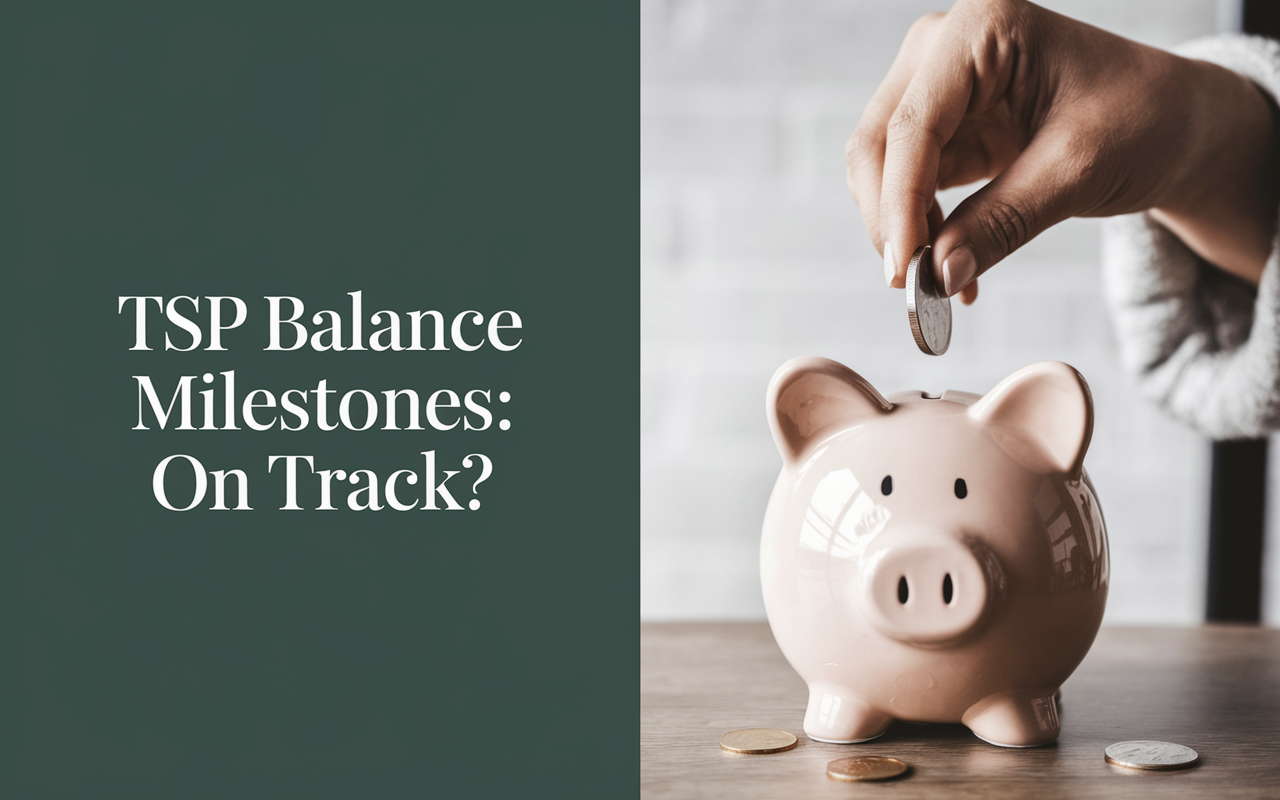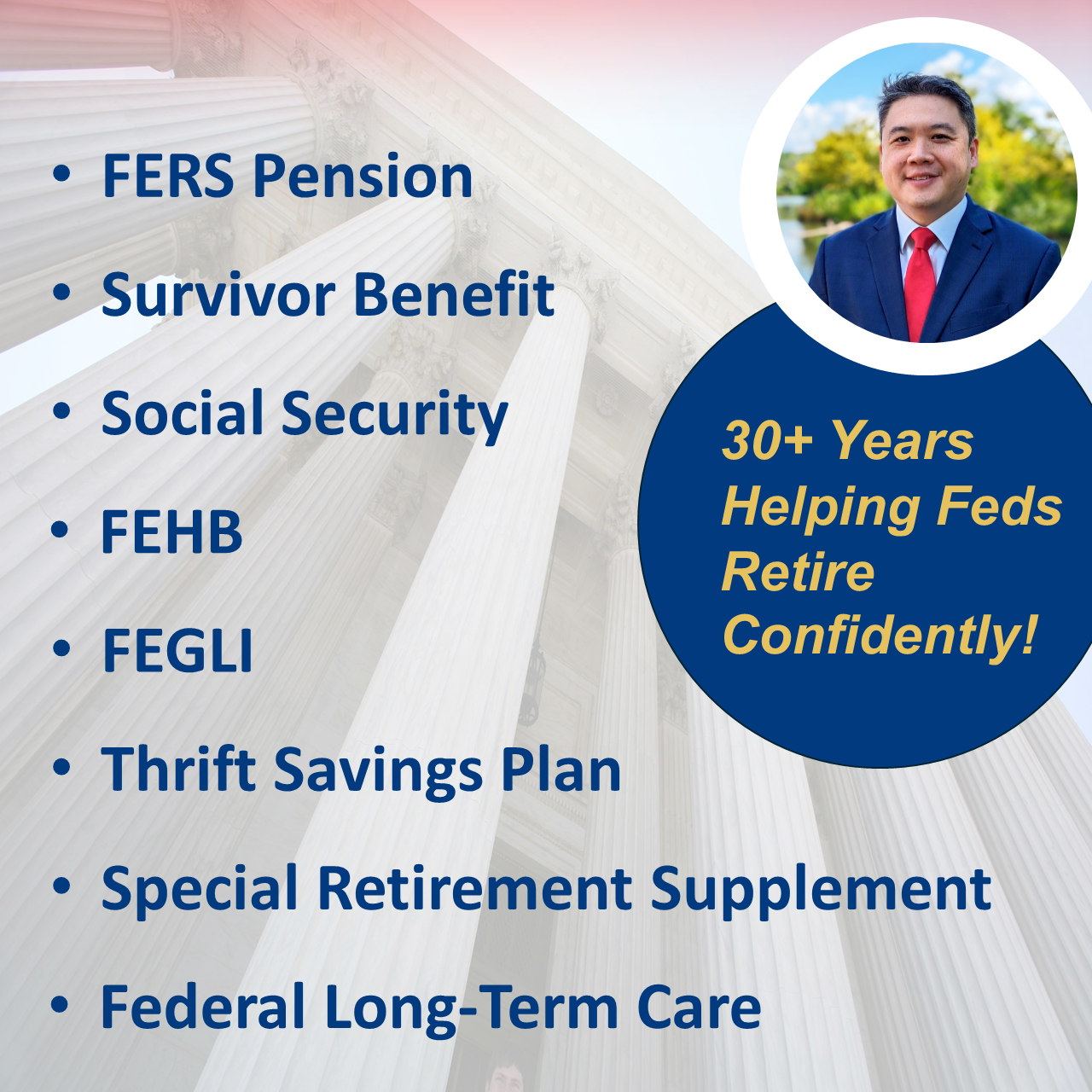TSP Balance Milestones: Are You on Track for Your Retirement Goals?
Whether you’re in the midst of your federal career or transitioning into retirement, understanding how your Thrift Savings Plan (TSP) balance compares to key benchmarks can help you gauge progress and adjust course. Many federal employees wonder if they’re saving “enough”—particularly as they get closer to retirement age. When your future well-being depends on the decisions you make today, clarity is crucial.
At PlanWell, our team is dedicated to helping federal employees retire confidently. With over 30 years of experience, our advisors hold the ChFEBC, CFP, and AIF designations, and we’ve developed the Fed-Expert Financial Blueprint to guide you through every stage of your TSP journey. Below, we’ll walk you through TSP balance milestones, average balances by age, retirement savings benchmarks, and some practical steps you can take right now to secure your financial future.
Understanding TSP Balances & Milestones
The TSP exists as a central pillar of retirement savings for federal employees under FERS (Federal Employee Retirement System), and it’s an especially robust resource when combined with your pension and Social Security. The TSP also offers some of the lowest expense ratios in the market, good employer matching contributions, and a variety of investment choices. But what exactly constitutes “enough” in your TSP, and how do you know if you’re on track?
One key way to evaluate your savings is by looking at average TSP balances at different stages of employment. While “average” is never a perfect benchmark—since individual circumstances vary—it can still be a helpful yardstick to measure your own progress.
Snapshot of TSP Millionaires
Reaching a seven-figure TSP balance may seem like a dream, but the number of TSP millionaires has grown considerably over the past decade, illustrating the power of consistent contributions and time in the market. In 2011, there were just 208 TSP millionaires. By 2024, that number reached 157,760. As of March 2025, despite a modest decline due to stock market fluctuations, there are still about 146,910 participants with balances of at least $1 million in their TSP accounts.
Below is a quick look at how TSP millionaires have grown over the years:
| Year | Number of Millionaires |
|---|---|
| 2011 | 208 |
| 2015 | 3,272 |
| 2020 | 75,420 |
| 2024 | 157,760 |
| 2025 | 146,910 |
The recent dip is largely tied to the overall market performance. In March 2025 alone, the C Fund fell by approximately 5.64%, and the S Fund by 7.92%. Fluctuations like these highlight why long-term commitment, rather than short-term market timing, is a cornerstone of successful TSP investing. (If you’d like to explore more, consider reading our article on common TSP misconceptions.)
TSP Account Balance Distribution by Age
Although average TSP balances can differ vastly by age and years of service, the starting point for many is simply to see how your balance stands relative to broader participant data. As of March 2025, the distribution of TSP accounts reveals that the majority of federal workers still have balances under $50,000, but those who have been contributing for over 25 years tend to accumulate significant savings. Do your own totals align with these benchmarks?
| Account Balance | Number of Participants | Average Years of Contributions |
|---|---|---|
| <$50k | 4,322,634 | 6.03 |
| $50k–$249k | 1,804,461 | 14.64 |
| $250k–$499k | 588,795 | 20.33 |
| $500k–$749k | 241,460 | 23.27 |
| $750k–$999k | 118,681 | 25.32 |
| >= $1 million | 146,910 | 28.62 |
Notably, those above $500,000 often have two decades or more of contributions. The largest TSP account balance as of March 2025 is $8.73 million—once even hitting a high of nearly $11 million at the end of 2021. Such figures highlight just how substantial TSP balances can grow with consistent investing and favorable market performance.
Key Retirement Savings Benchmarks
General financial guidelines suggest saving at least 10–15% of your income for retirement. T. Rowe Price and other institutions often publish targets, indicating how many multiples of your salary you should aim to have saved by certain ages. For instance:
- By age 35: 1 to 1.5 times your annual salary
- By age 50: 3.5 to 5.5 times
- By age 60: 6 to 11 times
In practical terms, if you’re 35 and earning $60,000, you’d want somewhere between $60,000 and $90,000 stashed away. For federal employees investing in the TSP, these percentages can be easier to achieve because of the agency match. However, if you find your balance is trailing behind these examples, don’t lose hope. There are strategies to accelerate your savings, especially if you’re over 50 and can capitalize on catch-up contributions.
Smart TSP Investment Strategies
As with many retirement plans, how you invest within the TSP matters just as much as how much you contribute. The TSP provides several funds—from the conservative G Fund to the stock-focused C, S, and I Funds. You can mix and match based on your comfort with risk and time horizon.
One of the most popular approaches is the Lifecycle Fund (L Fund). These funds rebalance automatically over time, shifting you from equities to bonds as you near retirement. For hands-on investors, building a custom portfolio allows you to increase or decrease risk in line with personal preference. If you prefer taking a balanced approach, a combination of the C Fund and G Fund might work, particularly once you’re closer to retirement age. Meanwhile, participants still in the early part of their careers often allocate more aggressively toward the C, S, or I Funds, seeking higher returns over a longer investing horizon. For a deeper look, you might check out our TSP & Investing guide.
Remember that your agency match can enhance your savings. Currently, federal employees under FERS can receive up to a 5% match just for contributing. If you’re behind on your retirement goals, consider upping your contribution, even if it’s just 1–2% more of every paycheck. Compounded over time, that small uptick can yield positive results. (Learn more about TSP matching.)
Practical Steps to Stay on Track
If you’re concerned about meeting your retirement targets, it’s never too late to adjust. Increase your contributions to capture the full agency match, or invest in funds that align with your risk appetite and timeline. If you’re over 50, leverage the catch-up contributions for an extra boost: the TSP allows you to contribute additional funds beyond the standard limit each year, which can help close any shortfall.
Curious whether your current TSP strategy is on track? Sometimes, an outside perspective can highlight advantageous areas to rebalance or ways to reduce fees in other parts of your portfolio. Consider reaching out to a financial advisor for federal employees—someone who thoroughly understands the unique interplay among TSP, FERS pension, and Social Security.
For more clarity on your specific situation, feel free to sign up for one of our free Federal Retirement Planning Workshops. These sessions are crafted to walk you through the complexities of your TSP, discuss retirement income possibilities, and explore strategic allocations for wherever you stand in your federal career.
Conclusion
Tracking the “average TSP balance by age” may not tell you everything, but it’s a meaningful starting point. Whether you’re nearing retirement or have years ahead, consistent saving and smart investing can contribute to making your TSP a strong component of your overall retirement plan. The stories of TSP millionaires illustrate that with perseverance, even modest contributions can multiply over decades. If you’re behind on benchmarks, there’s no time like now to increase your contributions and optimize your asset mix. And if you’re already in a comfortable position, double-check that your strategy matches your current risk tolerance and future income needs.
Achieving your retirement goals isn’t just about luck or guessing. It’s about knowing where you stand, understanding your options, and making adjustments along the way. The TSP—combined with your FERS pension and Social Security—can provide a strong foundation for a confident retirement, especially when it’s approached proactively and strategically.
Frequently Asked Questions
What is the average TSP balance by age for federal employees?
TSP balances vary based on years of service, contribution rate, and market performance. Those early in their careers typically have under $50k, while participants contributing 20+ years often exceed $250k. Many nearing retirement can surpass $500k or more—especially if they’ve taken advantage of consistent contributions and agency matching.
How long does it take to become a TSP millionaire?
The average TSP millionaire has been contributing for 25–30 years. Key factors include maximizing contributions, maintaining a diversified portfolio, and staying committed to a long-range plan. Catch-up contributions after age 50 can also accelerate the journey.
Should I rely on TSP Lifecycle Funds or build my own allocation?
Lifecycle Funds handle periodic rebalancing automatically, making them ideal for those who prefer a hands-off strategy. However, if you’re comfortable managing your own risk levels and diversifying among the G, F, C, S, and I Funds, a personalized allocation can align closely with your retirement timeline and objectives.












